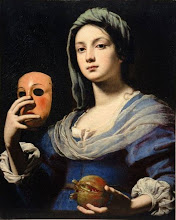All the great spiritual traditions of the world posit the existence of a single universal Self; though this is often overlooked, or even hidden.
In the mystical aspect of Judaism, there is the notion of the Ayn Sof (or Ein Sof), which literally means "without end" - limitless, inconceivable being. For centuries it was a hidden teaching that the Creator was actually a creation of Ayn Sof (this is similar to the Gnostic idea of the demiurge - a created creator). The Self is thus the creator of the being commonly conceived of as 'God'.
Many monotheists continue the same relationship with their one God that pagan polytheists had with their many gods, cajoling the deity to get what they want, then perhaps rejecting him if he doesn't deliver the goods. Ayn Sof, however, transcends even deity, and there is the idea that one can go beyond a dualistic, business relationship with It.
Fundamentalists and atheists alike are obsessed with the issue of the existence of God. Many sages have suggested that rather than questioning: "Does God exist?", it might be more fruitful to ask: "Who is the one who is asking the question?" All of the great teachers, from the Buddha to Lord Muhammad, have intimated that it is only by realising the Self that one may realise the nature of God.
Isaac the Blind was the medieval Jewish mystic who first used the term Ein Sof. Though he considered Ein Sof to be inaccessible to thought (like the Brahman of Indian Philosophy) he wrote that It may be approached by a mind free of thoughts. This stressing of the importance of mental stillness, making the mind like a cleaned mirror to perfectly reflect the Divine, is common to all the mystical traditions of the world.

Robert Fludd's view of the tree of the sephiroth (Jewish Mysticism)
from Utriusque cosmi historia, 1621.
The ten Sephiroth are emanations from Ayn Sof (the Self).
The tree is depicted growing downwards - this reflects the idea of the subtle body with its chakras, each looking after a different aspect of manifestation, having its roots in the Sahasrara at the crown of the head. The material world emerges from the spiritual realm. Western science assumes that selfhood and consciousness emerges from matter, Eastern philosophy often reverses this - the world emerges from the Self.
.
In India, the Creator, Lord Brahma, has only a handful of temples dedicated exclusively to Him, while the other two members of the Hindu trinity (Shri Vishnu and His various aspects, and Shri Shiva) have countless. The reason often given for this anomaly is that, in Hindu mythology, a curse was once laid on Him that He would not be worshipped. This myth is perhaps a metaphor for the Hindu idea of rejecting the created world in favour of the uncreated Self.


























